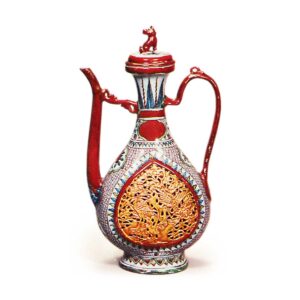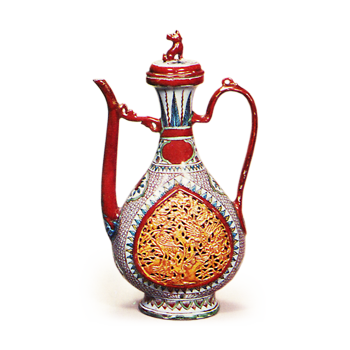
Kinrande is the general term for ceramics with gold patterns painted on the surface of the porcelain as if it were gold brocade. This gilded pattern was first used in China as early as the Song dynasty (960-1279), and examples can be seen in the Kurotei, Kakitei, Hakitei, and Tenmoku tea bowls, in which gold leaf was cut into patterns and fired onto the inner surface of the bowl. The rare occurrence of gilt on Goryeo celadon porcelain in Korea may be due to the influence of the Sung dynasty. As Jingdezhen porcelain flourished from the end of the Yuan dynasty to the Ming dynasty (1368-1644), gilt often adorned the surface of the porcelain, and the export porcelain of the Jiajing period (1522-66) enjoyed an unprecedented period of prosperity.
The most popular type of porcelain was colored porcelain, in which colored bowls and Susan cups were decorated with gold to give them a luxurious and gorgeous appearance. This type of porcelain is usually called akae-kinrande (red-painted gold brocade), but those with this technique on the surface of the overglaze painting are called moegi ji kinrande (moegi gold brocade) or ruri ji kinrande (lapis lazuli gold brocade), and are highly prized according to the color of the underlying surface. This technique has been used frequently in Japan since the Edo period (1603-1868), and many examples can be found in Imari and Kyo-yaki ceramics, but Japanese ceramics are often referred to as Nishiki-te.



